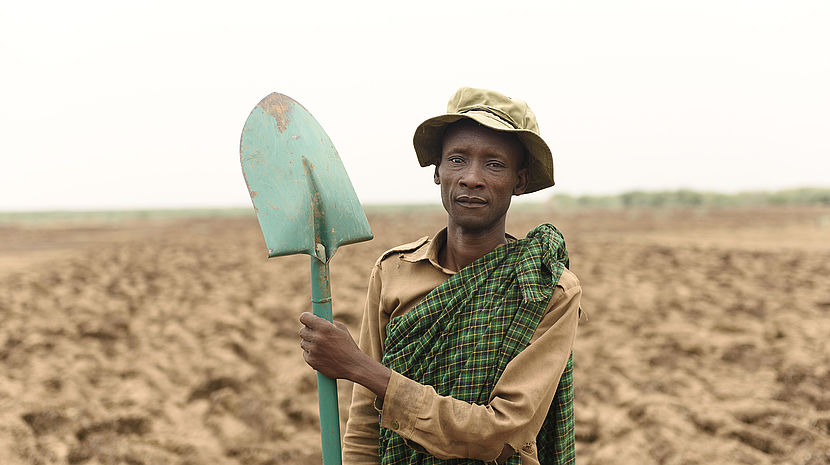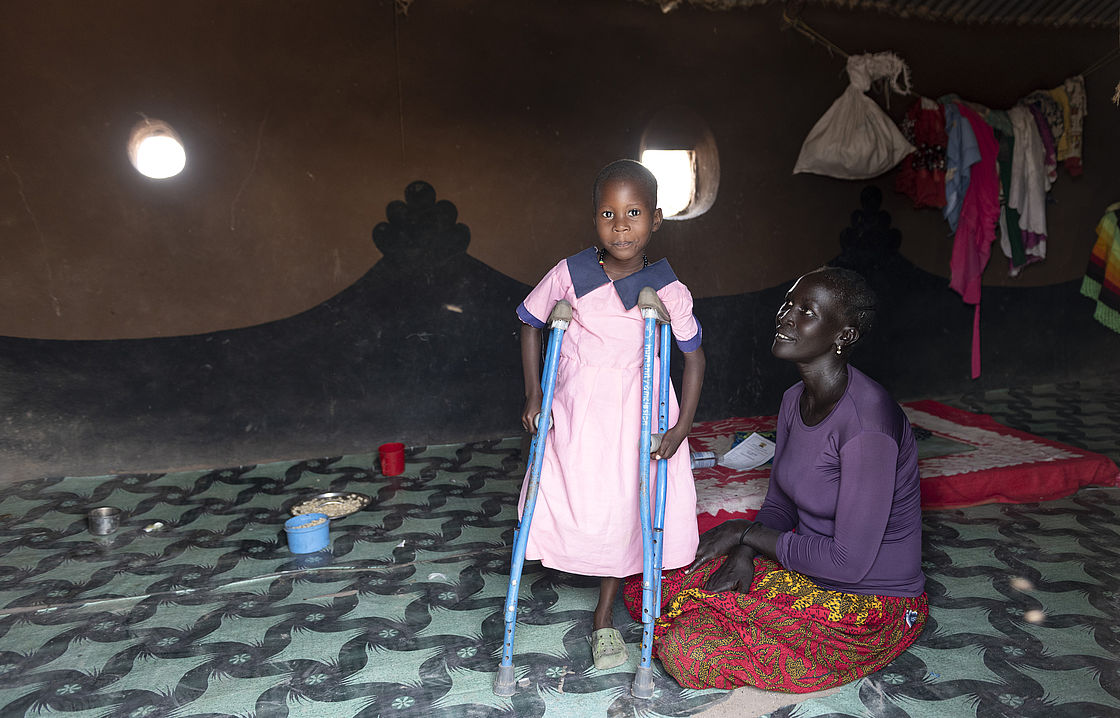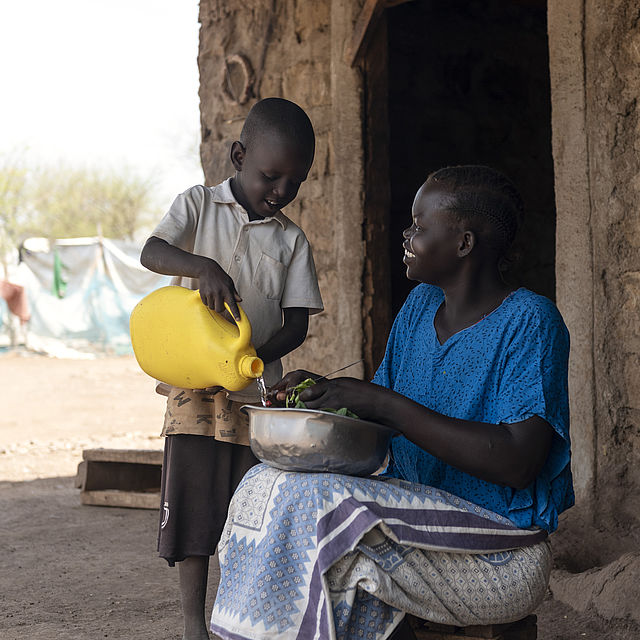Bridging Gaps in Eastern Africa:
Advancing Disability Inclusion in Humanitarian Action

Louyei lost his sight in 2016. CBM supports him and other persons with disabilities in the drought-stricken Turkana region of Kenya.
©CBM/Gitonga
CBM and DAHW (German Leprosy and Tuberculosis Relief Association) are at the forefront of responding to escalating humanitarian needs in East Africa, with a focus on the specific needs of persons with disabilities.
CBM and DAHW conducted a comprehensive gap analysis in Ethiopia, Kenya, Uganda and South Sudan to assess the status of disability inclusive humanitarian action for persons with disabilities in East Africa.
The aim of the study was to gain insights and make recommendations for improved inclusive programming. Key findings reveal significant gaps in data collection, planning, coordination and active participation of persons with disabilities. Furthermore, the study highlights challenges in implementing disability-inclusive humanitarian programming due to limited resources and insufficient inclusion of the insights of persons with disabilities.
Why a study was necessary.

6-year-old Princess lives in Kakuma Refugee Camp in Turkana, Kenya. Princess' mother fled South Sudan in 2014 during the war.
CBM
In addition to one of the worst droughts in decades and severe funding constraints, the conflict between Russia and Ukraine has further exacerbated the rise in prices of essential commodities in the Horn of Africa and several other African countries. Food costs in the region were already rising due to climate shocks, locust invasions, conflict, the economic impact of the COVID -19 pandemic and the recent war between Ukraine and Russia.
It is evident that the human rights of vulnerable persons, especially persons with disabilities, children, women, and girls, are constantly violated and their access to basic services is severely restricted or denied.
To gain deeper insights into the specific gaps in inclusive humanitarian aid for persons with disabilities and to substantiate the assumption that persons with disabilities have unequal access to humanitarian services, CBM and DAHW conducted a comprehensive gap analysis in Ethiopia, Kenya, Uganda and South Sudan. The aim of this study was to provide concrete recommendations for improved inclusive programming while gaining a solid insight into the current state of implementation of inclusive humanitarian interventions for persons with disabilities.
Evidence and data on persons with disabilities
The analysis revealed a significant data gap that hinders the effective inclusion of persons with disabilities in cluster approaches, potentially leading to inappropriate or misguided interventions. Although more cluster-level reports are available, the lack of systematic data collection on persons with disabilities in all study countries is a significant barrier. Without comprehensive data, their experiences and circumstances may not be fully understood or accounted for. Furthermore, the use of standardised language and approach by mainstream organisations and organisations focusing on persons with disabilities is inconsistent. Strengthening the mapping of organisations of persons with disabilities (OPDs) can also be considered a priority.
Planning and coordination for the inclusion of persons with disabilities
The study has identified gaps in the comprehensive application of principles and approaches for the inclusion of persons with disabilities in humanitarian response plans in different clusters, sectors, and countries, particularly in Uganda and Kenya. There is a lack of concrete measures and specific indicators for the inclusion of persons with disabilities, highlighting the need for increased efforts in these areas. Furthermore, the study shows that there are no dedicated working groups for the inclusion of persons with disabilities within existing coordination mechanisms, which hinders progress. There is a risk that the inclusion of persons with disabilities is neglected compared to thematic areas such as gender-based violence (GBV) and child protection, even though they fall under the protection cluster.
Active participation of persons with disabilities and their organisations
The participation of persons with disabilities is invaluable as it holds humanitarian actors accountable. However, gaps in linkages and coordination between OPDs, state actors and humanitarian organisations, particularly in South Sudan and Kenya, hinder the inclusion of persons with disabilities. Limited engagement and communication hinder the meaningful participation of persons with disabilities in humanitarian response. Difficulty in accessing resources also limits their impact. In addition, there is a risk that OPDs do not pay enough attention to the challenges of refugees and persons with disabilities, excluding them from vital support.
Disability-sensitive humanitarian programming
The study reveals significant gaps in inclusive humanitarian programming. While some organisations are making efforts to include the inclusion of persons with disabilities in their programming, challenges remain, such as a lack of inclusion of the insights of persons with disabilities, insufficient disaggregation of data and inadequate budget allocation. In target countries, several organisations are adopting an approach that includes persons with disabilities, but barriers such as limited accessibility and funding are hindering progress.
